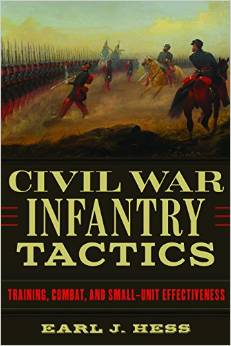“The whole army is like a great monster panting for breath,” wrote Assistant Surgeon William Child of the 5th New Hampshire in a letter from the Gettysburg battlefield on the night of July 3, 1863 (105). Across the fields, Chaplain Peter Tinsley of the 28th Virginia scribbled in his diary, “The scene at our hospital is horrid beyond description & by far the worst I have ever seen” (104).
On this night, at the end of the three-day battle, the countryside was awash in carnage. Thousands of dead and dying men lay where they fell, and an estimated 30,000 wounded filled woodlots and farmers’ fields or flooded houses, barns, outbuildings, churches, and schools. No place before or after in this blood-soaked conflict equaled the killing and maiming at Gettysburg. Steeped in this slaughter were the hundreds of surgeons and assistant surgeons in both armies.
Seemingly few, if any, aspects of those July days at Gettysburg have not drawn the attention of historians. Bookshelves groan under the weight of descriptions on each day’s fighting, the controversies, profiles of leaders, in-depth studies on regiments and brigades, and the horror that stalked ground in its aftermath. A handful of historians have addressed the carnage, the treatment of wounded, the hospitals, and the impact on the town, but this new book by Barbara Franco focuses on those who toiled for three days and more amid the human wreckage, trying to save lives.
In her preface, the author explains her purpose or methodology as “prosopography, briefly defined as a study that identifies and relates a group of persons or characters within a particular historical or literary context” (x). She endeavors to answer questions about medical training, the different experiences of Union and Confederate surgeons, and the impact of the war on their personal and professional lives.
Most of these men received the best medical training available in antebellum America. At Gettysburg, there were 664 Union and 444 Confederate surgeons and assistant surgeons. The majority of them were aged in their twenties and early thirties. The oldest was 61; the youngest, just 20. Reflective of the number of regiments in their respective armies, most Union surgeons came from New York and Pennsylvania; most Confederate surgeons came from Virginia, North Carolina, and Georgia.
The author offers rather fine descriptions of these men’s training and their lives in the army. One chapter is devoted to their pre-war education, covering their college preparations, medical school curriculum, lectures, and clinical experience. Another chapter examines their lives in the field. Few accounts of their clinical practice exist.
The remaining chapters describe various aspects of the carnage, the corps and division hospitals, the battle’s aftermath, the burial details, the work of contract surgeons (as well as the Sanitary and Christian commissions), and the experiences of surgeons in both armies who had the misfortune to be bagged as prisoners. A lengthy chapter is devoted to Camp Letterman and various aspects of its existence from July 22 to November 20, 1863.
The author traces the postwar careers of several of these surgeons and addresses the changes to the profession brought by the four-year struggle. She also provides brief personal biographies of twenty of them in their postwar careers and lives.
Gettysburg Surgeons is a solid work. The author writes very well and bases her study on commendable research. The engaging narrative addresses neglected aspects of Gettysburg’s well-traveled road and, for this, the author’s book warrants a reading.
Jeffry D. Wert is the author of The Heart of Hell: The Soldier’s Struggle for Spotsylvania’s Bloody Angle.
Related topics: medical care





